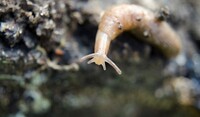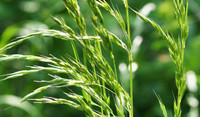
Powerful weed control in winter barley and rye

For both crops, successful weed control will be reliant on the precise application timing and choice of pre- and post-emergence herbicides.
Unlike wheat which can be drilled after the first flushes of grass weeds have been destroyed, winter barley and rye both need to be drilled earlier in the autumn to enable them to produce well-established tillers ahead of colder winter conditions. This therefore makes the use of stale seedbeds less applicable, therefore requiring then to be selectively sown only on land with a minimal grass weed burden.
As soon as the current period of hot, dry weather is replaced by cooler, wetter conditions – and seed drills subsequently spring into action – growers must be prepared to apply a full programme of pre- and post-emergence herbicides.
The small seed size of rye, and therefore its shallower drilling depth, adds to the level of accuracy required, with care needed to ensure pre- and post-emergence herbicide treatments don’t detrimentally affect the germinating seed and young seedlings.
The crop protection conundrum is further complicated for barley and rye thanks to a limited choice of approved herbicides: compared to wheat for which multiple active ingredients are available, for barley and rye there are just a handful of approved herbicides. Thankfully ADAMA has developed a strong range of options for both crops, with products such as TOWER, ANTHEM and HURRICANE offering a wide breadth of label approvals.
Winter barley herbicides
TOWER (250 g/l chlorotoluron, 40 g/l diflufenican & 300 g/l pendimethalin): with three proven and complementary modes of action and two application timings (pre- or early post-emergence), TOWER offers a simple solution for the control of Annual Meadow Grass and difficult broadleaved weeds in winter barley – either as a standalone product or as part of a programmed approach. The inclusion of chlorotoluron (unique to ADAMA) gives good residual activity in a range of soils and weather conditions and helps to mitigate the risk of resistance.
ANTHEM (400 g/l pendimethalin) is ADAMA’s SC formulation which delivers higher efficacy on grass weeds compared to CS formulations of the same active ingredient. This user-friendly product is easy to pour and rinse and can be used up until BBCH 30 to provide a broad spectrum of weed control.
HURRICANE (500 g/l diflufenican) delivers proven broadleaf weed control and can improve the efficacy of some grass weed herbicides. It also boasts excellent residual activity which provides enhanced weed control even in dry conditions where germination is protracted.
TOPSAIL (800 g/l prosulfocarb) is a useful addition to winter barley programmes. Used as a pre-emergence treatment it offers good control of annual grass weeds and annual broad-leaved weeds.
Winter rye herbicides
TOWER (250 g/l chlorotoluron, 40 g/l diflufenican and 300 g/l pendimethalin) is particularly useful for controlling grassweeds in rye, with its preferred timing for application being at the early post-emergence stage (GS10-11).
HURRICANE (500 g/l diflufenican) can be used with TOWER to add extra protection, up to a suggested maximum diflufenican rate of 100 gai/ha.
TOPIK (240 g/l clodinafop-propargyl & 60 g/l cloquintocet-mexyl) plus oil can also be used after TOWER to provide additional control of wild oats from BBCH13-14.
ANTHEM (400 g/l pendimethalin) is approved for use in rye. However, because of the vulnerability of young rye seedlings and the selectivity of shallow germinating seeds, ANTHEM isn’t always compatible with rapidly emerging crops. It shouldn’t therefore be used on lighter sands, stony or gravelly soils as any sudden heavy rainfall events will wash the active into the crop’s rootzone where it could cause significant damage to the developing plant.
SPINNAKER (800 g/l prosulfocarb) is a useful addition at early post-emergence timing (BBCH 10-11) but can only be used in rye under an EAMU (EAMU 20191754) up to 3.0 l./ha, but with a recommended maximum dose of 2.0 l/ha for reasons of crop safety.
For more information about ADAMA’s range of barley and rye-safe herbicides, please go to www.adama.com/uk or click on the product links below:
- HURRICANE 500 g/l diflufenican
- ANTHEM 400 g/l pendimethalin
- TOPSAIL 800 g/l prosulfocarb
- TOWER 250 g/l chlorotoluron, 40 g/l diflufenican & 300 g/l pendimethalin
Latest articles

Powering up slug control: the importance of mould resistance

Powering up slug control: pellet timing and baiting point density are critical
